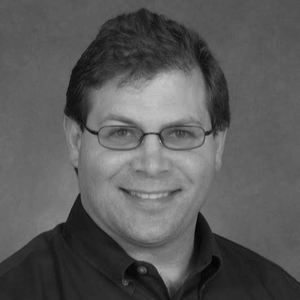The post-pandemic: For researchers, a bold new world

It stands to reason that an unprecedented year would create both extraordinary hardship and unique opportunity.
Heart-rending, mind-numbing 2020 has certainly done both, according to Jon Longtin, associate dean for research and entrepreneurship at Stony Brook University’s College of Engineering and Applied Sciences (CEAS), who sees the plagued period as “a year of challenge and uncertainty, but also undiscovered opportunity.”
Witness the CoreVent 2020, a pressure-cycled, fully functional emergency ventilator Dr. Longtin – also a CEAS mechanical engineering professor – and friends designed, prototyped and tested over 10 pressure-packed days this spring, while the first COVID-19 wave wracked the Greater New York region.
That innovative sprint was just one of many examples of ingenuity that the university community produced. “This whole experience has forced innovation upon us, whether we like it or,” Dr. Longtin notes. “And that process is still very much ongoing.”
And that’s a very good thing, according to the professor, who sees the last nine months as broken into three distinct periods, marked by pandemonium, then planning and response, and finally accommodation – with plenty of new thinking mixed throughout.
“The first period was very chaotic, where COVID was suddenly sprung upon us and we really didn’t know where the boundaries were,” he says. “We just had to go with the flow.
“During the second period, we began to adapt and put protocols in place,” adds the associate dean, who served this summer on a university-wide planning committee, headed by Stony Brook Vice President for Research and Operations Richard Reeder, that focused on gradually reopening SBU’s scientific facilities in the safest possible manner.
“This was done in stages,” Dr. Longtin says. “With things like reduced laboratory occupancy, social distancing, personal protection and swapping of schedules in the labs so different researchers could use their facilities … it was a lot of work.”
The process began with the “complete shuttering” of the Advanced Energy Research and Technology Center (AERTC) and other SBU facilities – “Everybody went home, except for essential employees,” Dr. Longtin says. The past few months have been “steady state,” with the AERTC as busy as it can safely be in the Age of Coronavirus.
The Advanced Energy Center, according to Longtin, followed SBU’s phased reintroduction rigorously, resulting in the most-efficient-possible reopening of AERTC facilities.
“I have to give credit to (Chief Operating Officer) David Hamilton and his administration, which was on top of this from the start,” Dr. Longtin says. “They fully embraced the safety protocols and the phased transition to restarting laboratory research, to the benefit of everyone in the AERTC.”
With promising vaccines in the pipeline, the associate dean is eager to welcome back “normal” life, though he acknowledges that the pandemic has likely permanently altered what is considered “normal.”
Case in point: Prior to COVID, remotely participating in a meeting suffered from “a bit of a stigma, almost with a second-class-citizen attachment,” but not anymore, according to Dr. Longtin, who thinks “that’s largely disappeared, and that’s a good thing.”
“There were sporadic efforts before, as people realize the benefit of remote work,” he notes. “But now people are realizing the potential for enormous productivity gains.”
The professor referenced the jet-age tradition of flying to another city, staying overnight in a hotel and then picking up and traveling back, all for a two-hour face-to-face meeting with a client or collaborator.
“That’s just how it was done,” he notes. “As opposed to now just turning on your computer five minutes before the meeting, and you’re engaging with the people you need to.”
A post-pandemic world where remote connectivity rules – including remote tools, such as researchers logging into a central computer, or protégés at work in the lab with their mentor coaching on a screen – will likely find collaboration “much easier on a larger scale,” according to Dr. Longtin.
And that could mean a quantum forward leap for the AERTC and the global scientific community, he notes, in 2021 and beyond.
“Traditional geographic boundaries dissolve away,” Dr. Longtin says. “You can bring more experts to the table, because things are not so provincial – instead of calling on local people for a project or funding opportunity, it is now far easier to engage people nationally and even internationally.
“When things return to ‘normal,’ I suspect the pendulum, will begin to swing back to some degree,” he adds. “My hope is that we land in some hybrid location, where we embrace the benefits of both engaging in person and working remotely.
“That’s what I expect might happen, and I believe it will.”
